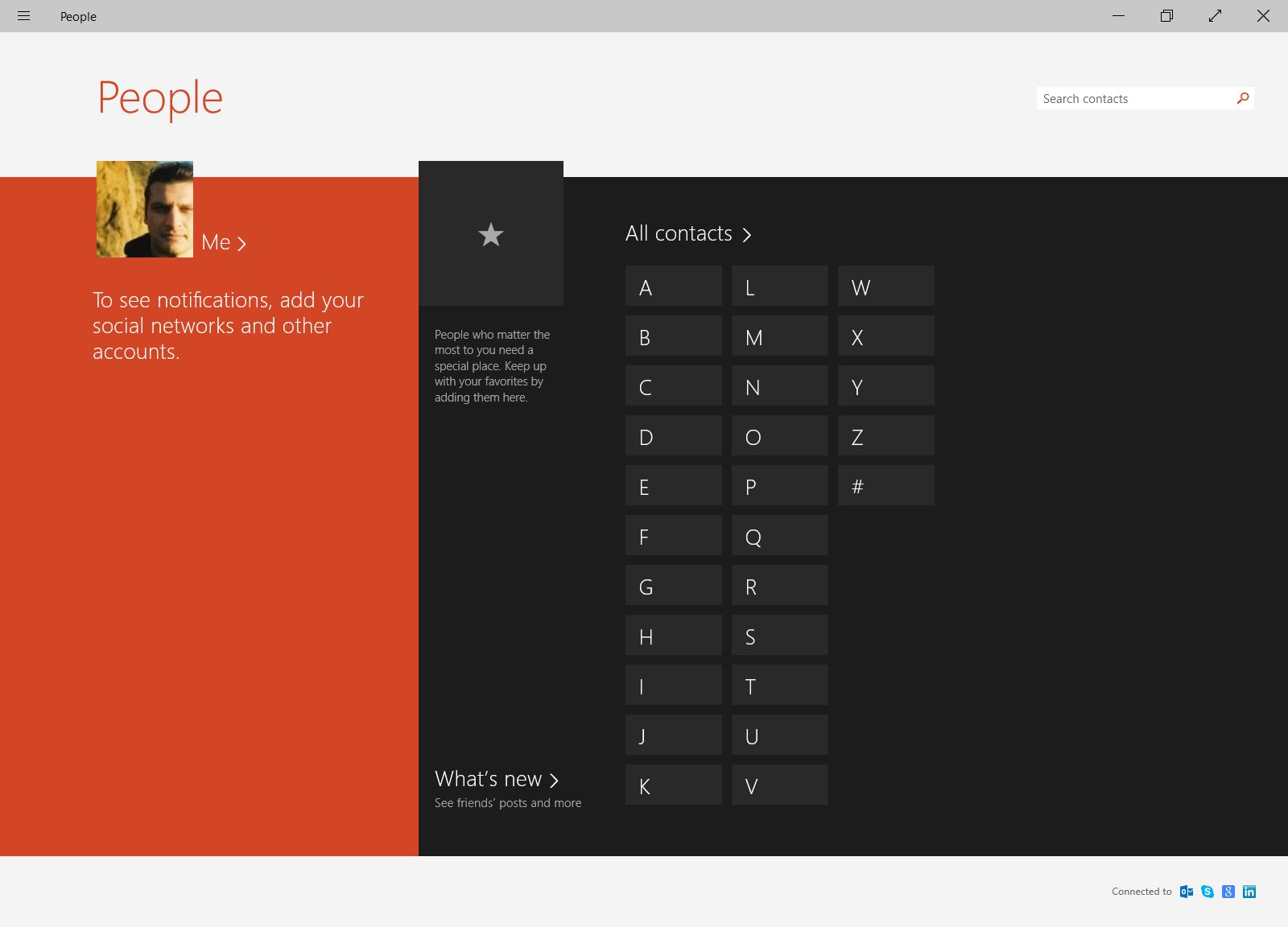Managing contacts in Windows 10
 Windows 10 is shaping up to be the embodiment of Microsoft Mobile-First, Cloud-First philosophy. One particular aspect of what is expected by this strategy is the ability to manage contacts in an effective way.
Windows 10 is shaping up to be the embodiment of Microsoft Mobile-First, Cloud-First philosophy. One particular aspect of what is expected by this strategy is the ability to manage contacts in an effective way.
Managing contacts is not a trivial task, and it’s one of the most misunderstood processes in IT. Contacts are commonly stored in a personal device first, may that be a smartphone, tablet or laptop. We tinkered a bit with the People app in Microsoft Windows 10, and these are our thoughts:
Storage De-Fragmentation using Social Data
Commonly, the same contact’s data created on one device, is not stored in the same way across other devices. Address books on different devices may or may not be compatible with each other, which makes it a problem when synchronizing contacts from one address book to another.
The advent of social apps has brought an unintentional advantage to platforms looking for an easier way to sync address books. Taking a page from Google, Microsoft’s implementation of social connectivity is rather smart within the People app, turning social connections into contacts that can be linked to local contacts and saved to OneDrive, for easy synchronization across other devices.
Social Activity Monitor
Connecting social accounts to the People App does not simply create contact instances of people we are connected to, it goes one step further, providing a live feed of the latest social updates, as of now, only from Facebook and Twitter.
It’s unclear whether other feeds will be added, such as Google Plus, and Google Pages. Considering the current roughness of the experience at this stage of development, we can expect a lot of changes in the coming months.
Social linking
One of the nice features already part of the People app is the ability to click on a link from a social feed, such as a Tweet or facebook post update, and be taken directly to the contact in the People app to whom the update originates. All other hyperlinks are opened in the default browser.
Duplicate contacts
Dealing with duplicate contacts, especially when managing thousands of contacts created automatically from Twitter, Facebook, Google and Yahoo, can be a bear. The People app’s algorithm for automatically suggesting similar contacts, seems to work rather well, as it identifies contacts quickly and accurately.
A clean, slick view and user experience
Finally, the People app is one that offers a clear, uncluttered view of contacts. Contacts can be searched by name, or by any information that appears in their card, such as email addresses, web links and keywords.
Features we can expect
There is a lot that can be expected from this app at this stage. An important feature is definitely the addition of a search box in the Item picker. For instance, when trying to link a contact to another that is not within the suggested ones, the Item Picker forces the user to scroll sideways, through the entire list of contacts, which could be avoided by adding the same search feature present in the main window.